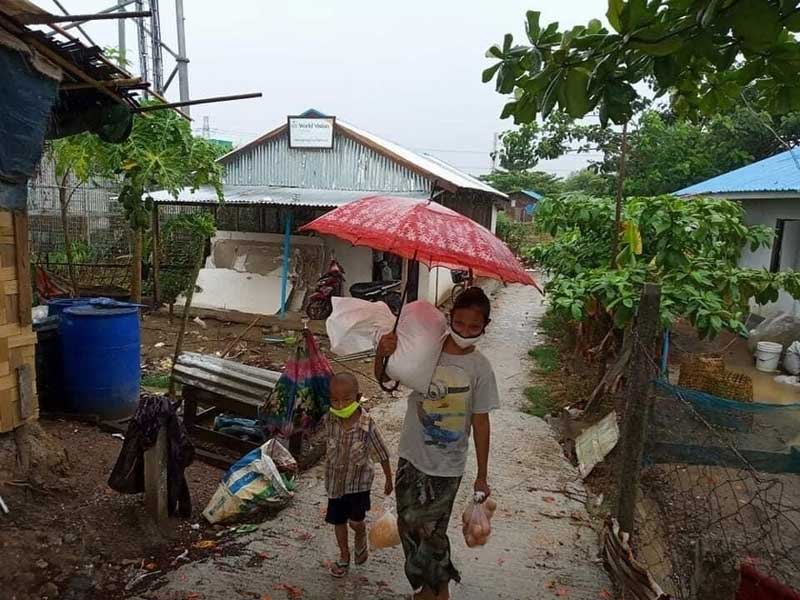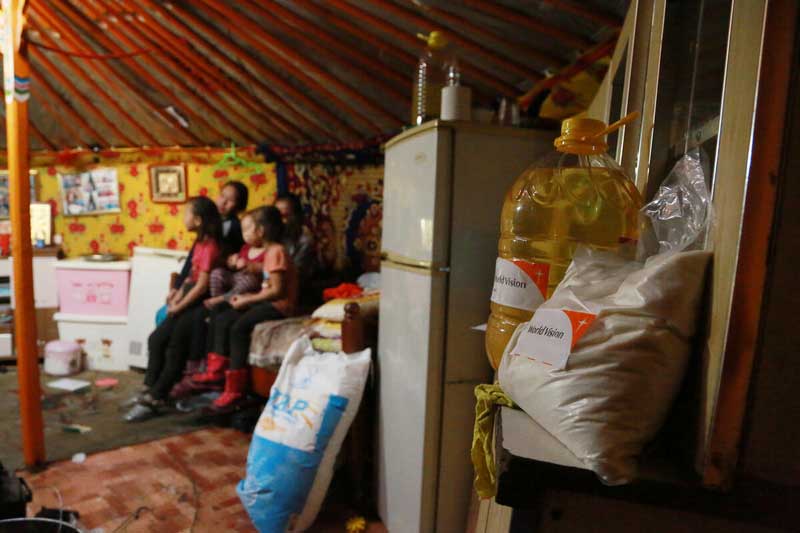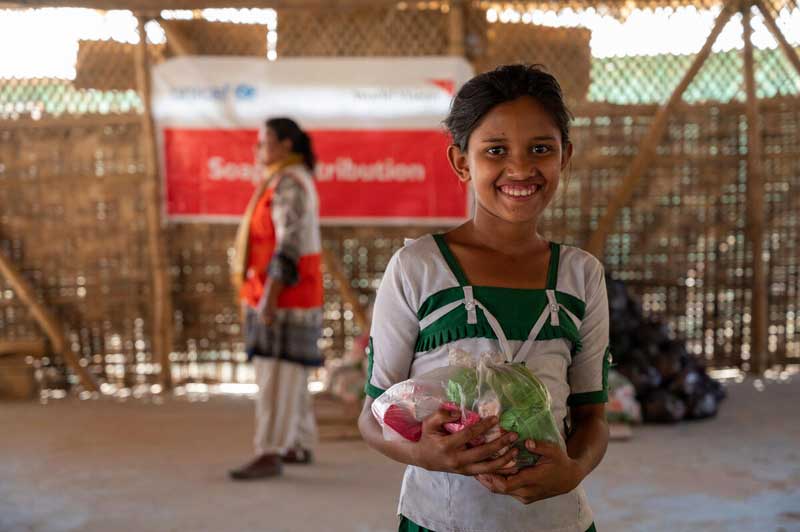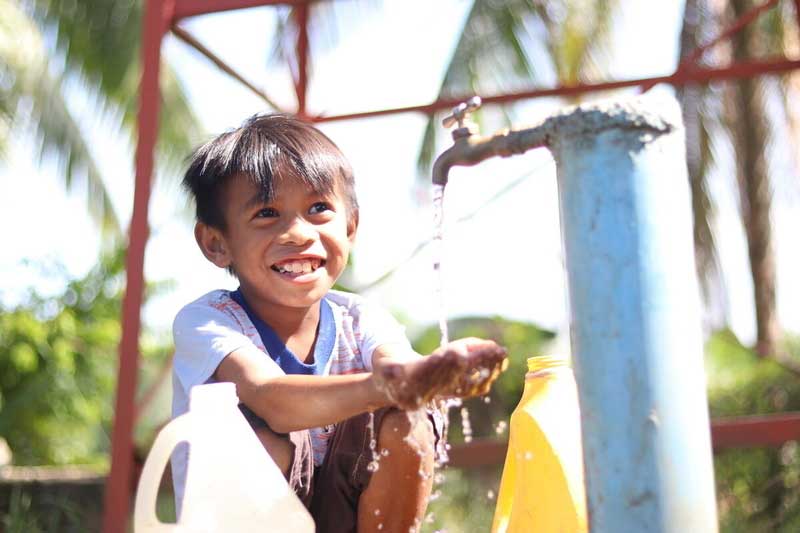Latest Updates
- On March 11, 2020, the World Health Organization (WHO) labelled the coronavirus outbreak a pandemic.
- As of September 2, there are more than 26,093,544 people infected worldwide, and more than 864,563 died.
- World Vision has declared a Global Health Emergency Response for COVID-19.
- Although the virus is present in places where World Vision has existing development projects, no child registered in our programmes is currently infected.
- Read the latest World Vision’s report about the impact of COVID-19 on children: “COVID-19 Aftershocks”
- Follow World Vision's response to the COVID-19 pandemic around the world via our interactive map.
COVID-19, or coronavirus disease, has been topping headlines as more than
26,093,544 people and counting have been infected worldwide, with more than 864,563 deaths (as of Sept. 2).
As countries and communities respond to the virus by closing schools and places of work and imposing quarantines, along with people limiting public interaction, it is the elderly and the very poor who will be greatly impacted. Children will also be significantly affected by the consequences of this crisis.
- What is COVID-19?
- How dangerous is COVID-19?
- What are the symptoms of COVID-19?
- How can I protect myself and loved ones?
- How will the COVID-19 outbreak impact the poor?
- What is World Vision doing to help with the COVID-19 crisis?
- Are any sponsored children affected by COVID-19?
- What are the concerns for children and those we work with?
- What is a pandemic and how is one declared?
- How can I help the COVID-19 outbreak response?
1. What is COVID-19?
COVID-19, the official name for the disease caused by the novel coronavirus, is a contagious virus that was first identified in Wuhan, Hubei, China, in December 2019. It causes flu-like and respiratory symptoms and can be transmitted from person to person. Health authorities in China and across the world are concerned about the virus and are working together to try to control its spread.
So far more than 26 million people (as of Sept. 2) have been infected worldwide. On March 11, 2020, the World Health Organization (WHO) labelled
the coronavirus outbreak a pandemic. The number of countries reporting people with the virus continues to grow.
 World Vision distributed basic food supplies for the most vulnerable children and families of Street Children Project in Hlaing Thar Yar Township, Yangon, Myanmar during the COVID-19 pandemic. Photo: Kyaw Thet Tun
2. How dangerous is COVID-19?
World Vision distributed basic food supplies for the most vulnerable children and families of Street Children Project in Hlaing Thar Yar Township, Yangon, Myanmar during the COVID-19 pandemic. Photo: Kyaw Thet Tun
2. How dangerous is COVID-19?
The novel coronavirus is from a family of viruses that include the common cold, as well as more dangerous viruses such as SARS (Severe acute respiratory syndrome) and MERS (Middle East respiratory syndrome). There is still much to learn about the virus. Current statistics show that about 2-3% of those infected with COVID-19 die in countries that have reasonably good access to advanced health services (e.g. China) and equipment and supplies such as ventilators and oxygen.
The case fatality rate in countries with weaker health systems is expected to be higher. Those at greater risk include people with chronic health conditions and the elderly. To get a sense of perspective, cases of influenza, more commonly known as the flu, currently dwarf the number of coronavirus cases by thousands. However, the death rate for seasonal flu is much lower (about 0.1%) than that of COVID-19.
3. What are the symptoms of COVID-19?
Common signs include respiratory symptoms, fever, cough, chills, body ache, shortness of breath and breathing difficulties. In more severe cases, infection can cause pneumonia and severe acute respiratory syndrome.
4. How can I protect myself and loved ones?
WHO recommendations to reduce exposure to and transmission of COVID-19 include:
- wash your hands frequently;
- maintain social distancing (maintain a distance of 3 feet between yourself and people that are coughing or sneezing);
- avoid touching eyes, nose and mouth;
- practice respiratory hygiene
- if you have fever, cough and difficulty breathing, seek medical care;
- stay informed and follow guidelines provided by your healthcare provider.
5. How will the COVID-19 outbreak impact the poor?
The potential impact of COVID-19 on countries with extremely weak health systems or with large numbers of displaced people is extremely concerning.
The COVID-19 mortality rate is likely to be higher in countries where there is a lack of hospitals and health centres. Facilities are also poorly equipped with diagnostic kits, isolation areas and intensive care and respiratory equipment. While higher-income countries have anywhere between 2 and 12 hospital beds per 1,000 population, in the poorest countries, there may be 1 bed per 10,000 people or less.
In some countries in the developing world there are high numbers of
refugees, displaced people, and people on the move, making them especially vulnerable to the virus. Sub-Saharan Africa hosts more than 26 per cent of the world’s refugee population with over 18 million people in this region declared to be people of concern to UNHCR (UN refugee agency).
Countries in Africa, the Middle East, Latin America and Asia host very large settlements and camps, with displaced people fleeing conflict and poverty. The populations are often living in unhygienic and overcrowded camps and settlements with limited access to medical care. Populations caught up in conflict are also on the move and difficult to reach or monitor for the virus. The risk of the virus spreading if it gets into these vulnerable populations is very high and more robust interventions are required to help prevent this from happening.
 A family in Mongolia receives flour, oil, rice and sugar as part of the World Vision food distribution programme to help families affected by COVID-19. Photo: Dashdorj Otgonkhuu
A family in Mongolia receives flour, oil, rice and sugar as part of the World Vision food distribution programme to help families affected by COVID-19. Photo: Dashdorj Otgonkhuu
The economic impact of the outbreak on the poor is also of concern. Any loss of work for those who survive on minimal earnings will have a devastating impact on household incomes where people survive from day to day. The price of food and goods is also likely to rise as shortages emerge and people begin to hoard supplies. The very poorest will not be able to stock up in the same way and the loss of earnings will make it very hard for them to feed their children. The situation could go on for weeks or months.
The impact of the virus will make it more difficult for the world to achieve Sustainable Development Goal 1 (SDG 1). The goal has as its target that less than 3 per cent of the world’s people would be living in extreme poverty by 2030.
6. What is World Vision doing to help with the COVID-19 crisis?
World Vision’s main goal is to limit the spread of COVID-19 and reduce its impact on vulnerable children and families.
As most staff are from the very communities we serve, our response is already well under way. Here are a few examples of our work:
- in Wuhan, China, the epicentre of the disease, World Vision staff provided critical medical equipment to hospitals;
- in the Democratic Republic of Congo, we are training Christian and Muslim faith leaders to keep communities safe;
- in Mongolia, we partnered with the government to reach 890,000 parents with messages on how to care for children during this stressful time, using social media.
Over the next 18 months, World Vision will invest US$350 million in emergency response to limit the spread and impact of COVID-19. The response will span every place World Vision works, reaching 72 million people, of whom half are children. Moreover, all the countries in which World Vision operates have adapted their work to be primarily focused on COVID-19.
To learn more about how World Vision Canada is responding to the COVID-19 outbreak,
visit our dedicated page.
 Nurankis, 11, happily receives soap for her and her family as part of a program that is being carried out by World Vision in partnership with UNICEF. The initiative aims at distributing soap to Rohingya refugees to help prevent COVID-19. Photo: Himaloy Joseph Mree
7. Are any sponsored children affected by COVID-19?
Nurankis, 11, happily receives soap for her and her family as part of a program that is being carried out by World Vision in partnership with UNICEF. The initiative aims at distributing soap to Rohingya refugees to help prevent COVID-19. Photo: Himaloy Joseph Mree
7. Are any sponsored children affected by COVID-19?
Although the virus is present where World Vision has projects, no child registered in our programmes is currently infected. We are working closely with our programmes staff to keep all children safe.
8. What are the concerns for children and those we work with?
Countries with effective health systems are in a much better place to monitor, identify and treat those with the virus, as well as to prevent its spread. We are most concerned about countries where the health systems and monitoring are weak, where people may already be suffering from diseases which are common among the poor, such as malaria, tuberculosis, pneumonia, HIV and AIDS and Ebola or where immune systems are compromised by severe malnutrition. People living in these contexts are at greater risk from coronavirus.
You can learn more about the impact of the COVID-19 outbreak crisis on children in our newest report entitled
"COVID-19 Aftershocks".
 As part of World Vision's preparedness scheme, the awareness drive started in January even before the lethal virus was officially declared a pandemic by the World Health Organization. Photo: Joy Maluyo
9. What is a pandemic and how is one declared?
As part of World Vision's preparedness scheme, the awareness drive started in January even before the lethal virus was officially declared a pandemic by the World Health Organization. Photo: Joy Maluyo
9. What is a pandemic and how is one declared?
A pandemic is defined as an outbreak of an infectious disease that affects people over an extensive geographical area. An infectious disease or condition is not a pandemic solely because it kills a large number of people, but because it is not constrained by borders and can have a potentially global impact. According to the
World Health Organization (WHO), a pandemic can occur when three conditions have been met:
- a disease emerges which is new to the population;
- the agent (e.g. virus) infects humans, causing serious illness; and
- the agent spreads easily and sustainably among humans. Most people will not have immunity to the virus.
The WHO is extremely careful about when to declare a pandemic. It seeks to avoid creating panic that a declaration can bring. However, a declaration can also spur countries and individuals into action to do more to prevent the spread of the virus.
Viruses that have caused past pandemics typically originated from animal influenza viruses. The 2009 swine flu pandemic is thought to have killed hundreds of thousands of people. With no vaccine currently available, containing the spread of COVID-19 is vital.
Although seasonal flu can spread globally the mortality rate is typically much lower and a much larger number of people have immunity.
10. How can I help the COVID-19 outbreak response?
There are two ways that you can help in our response to the COVID-19 pandemic:
- Make a donation: By supporting World Vision’s response, you can help strengthen health systems and support children and their families by providing things like life-saving essentials, protective equipment and more.
- Sign our petition: Call on the Canadian government to join a global effort to help prevent COVID-19's devastating impact on refugee and displaced children, and the elderly on the world's margins.
Edited by Tatiana Almeida, World Vision Canada